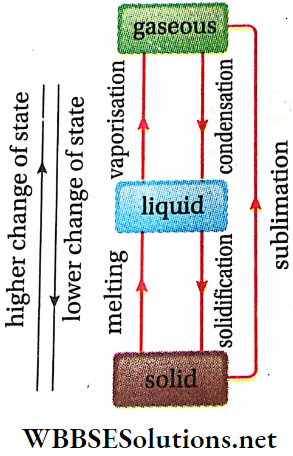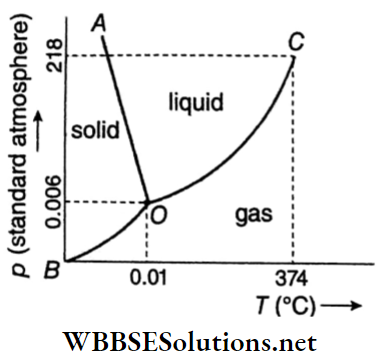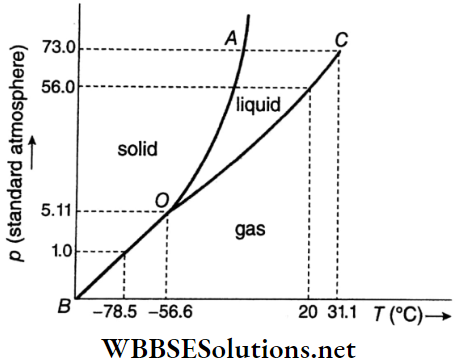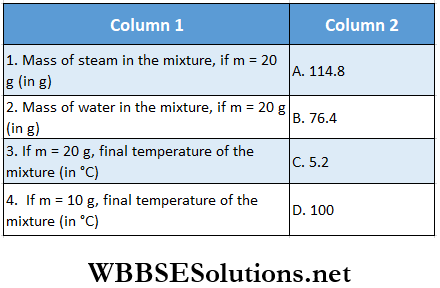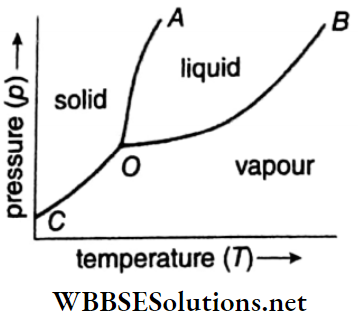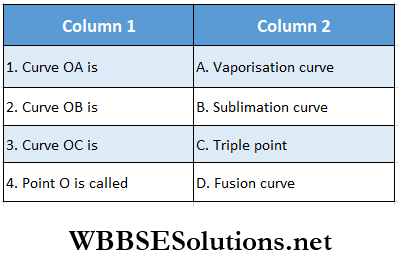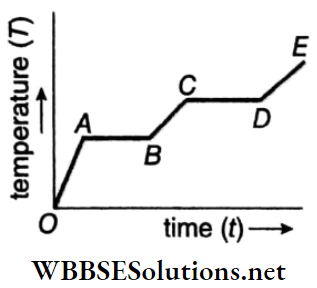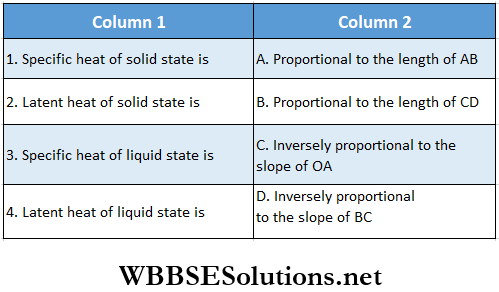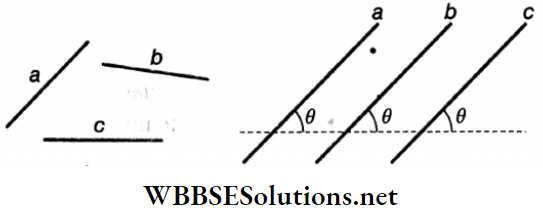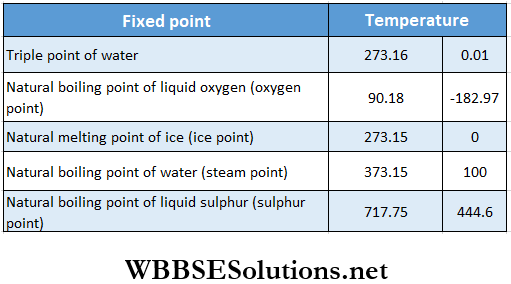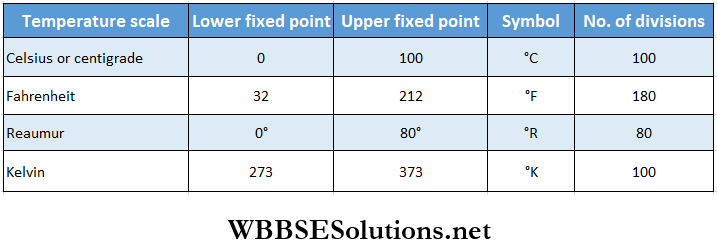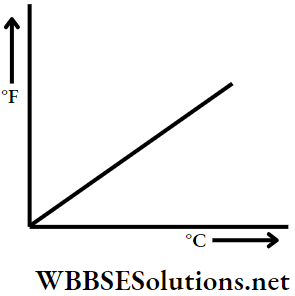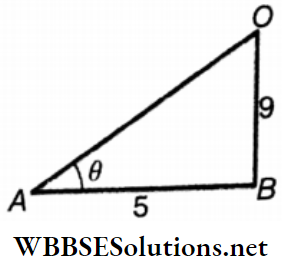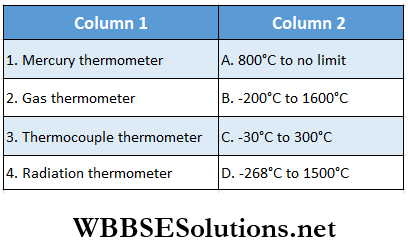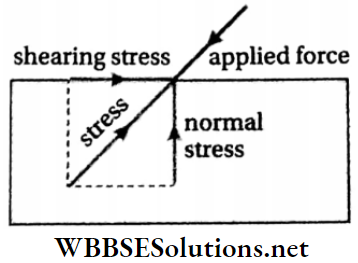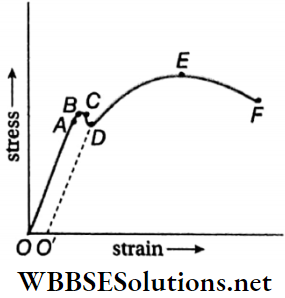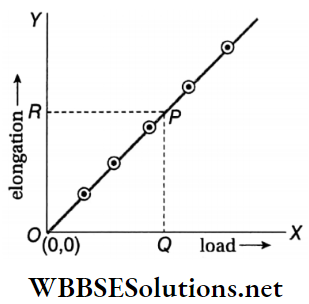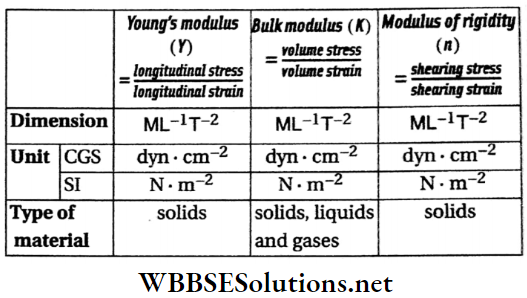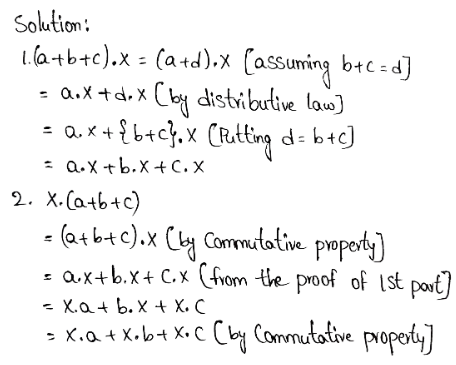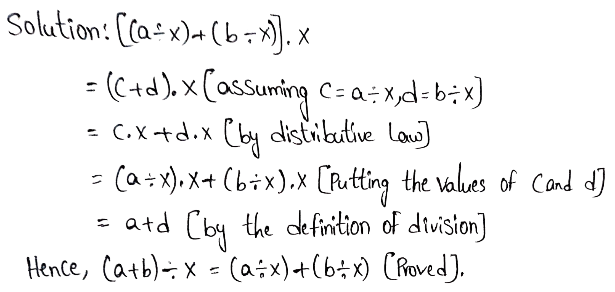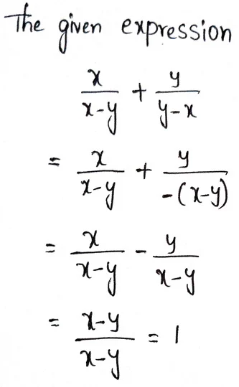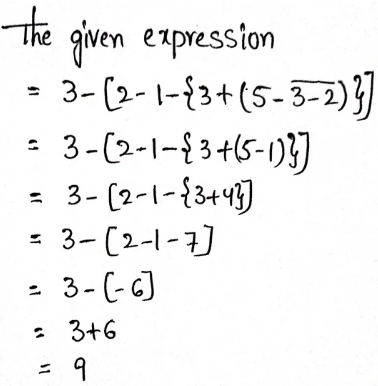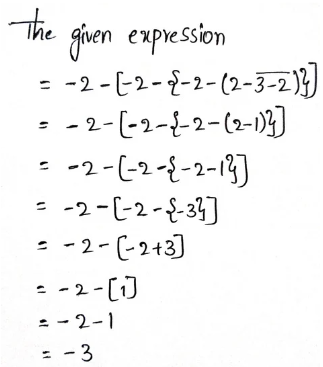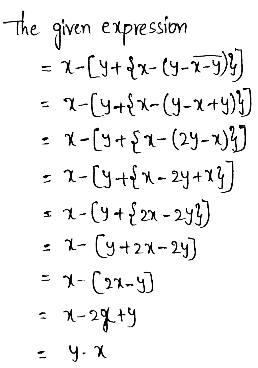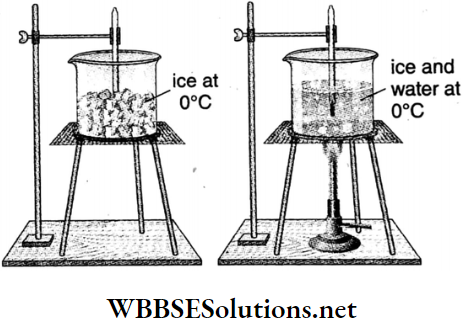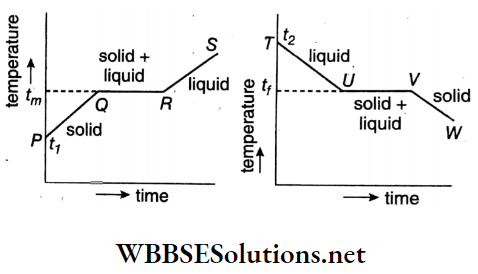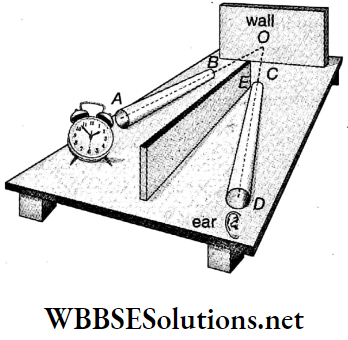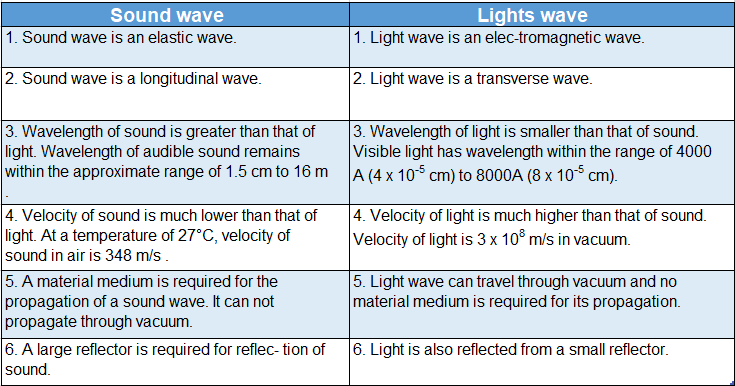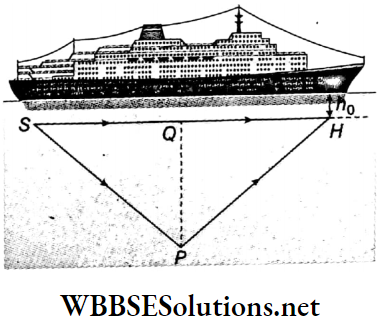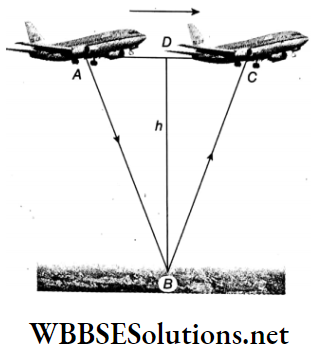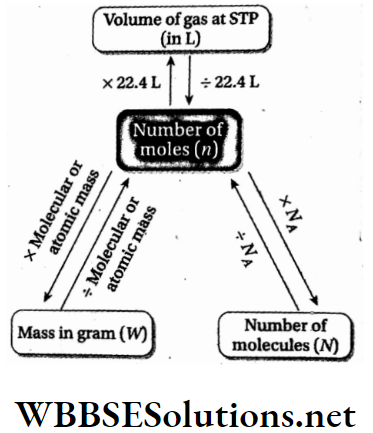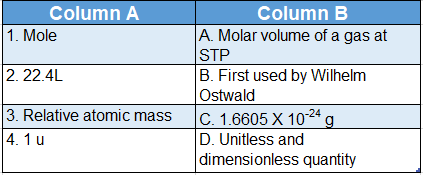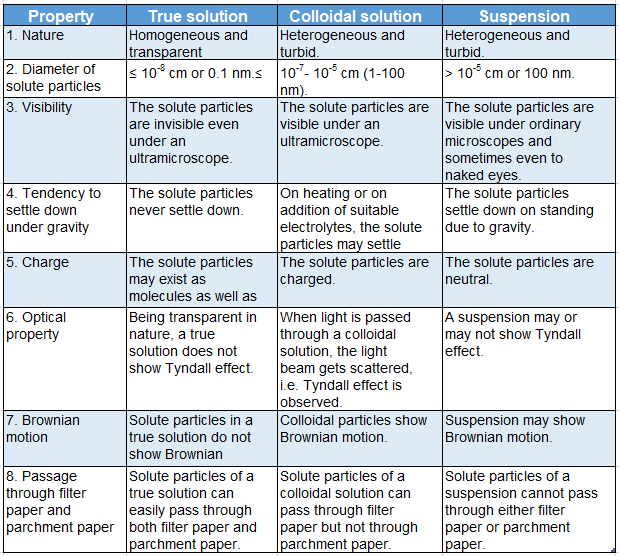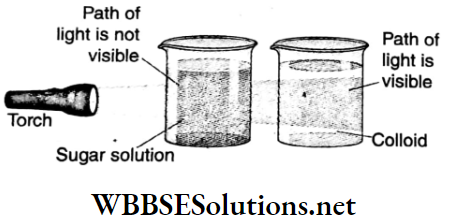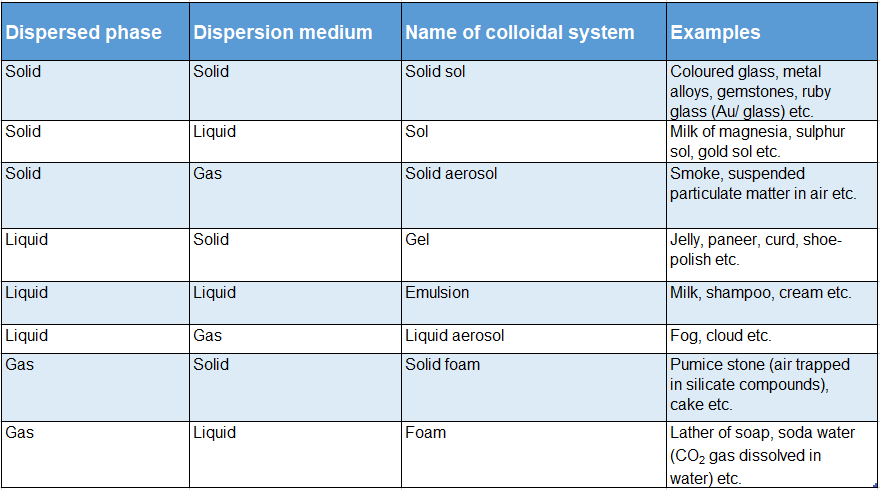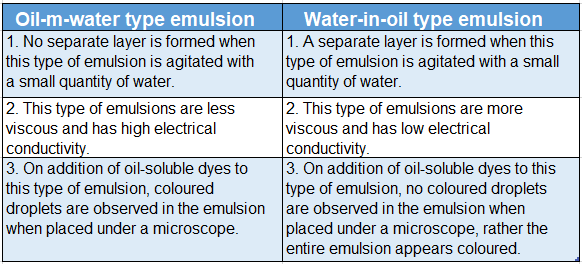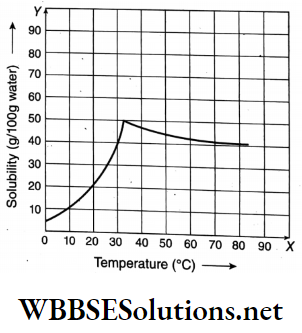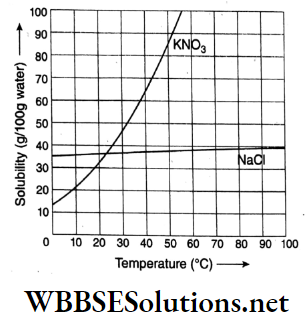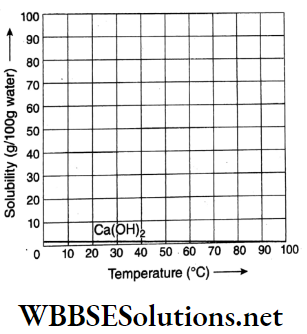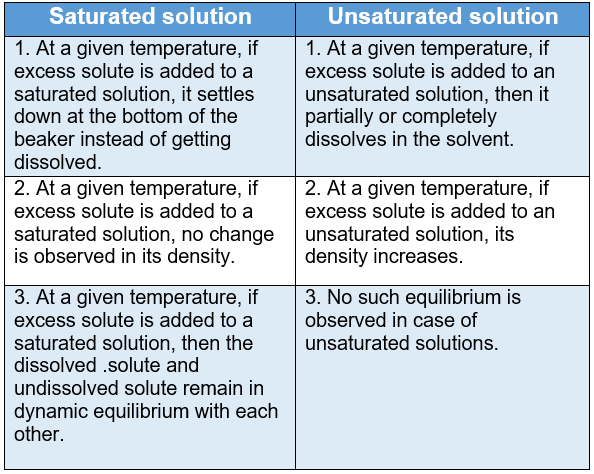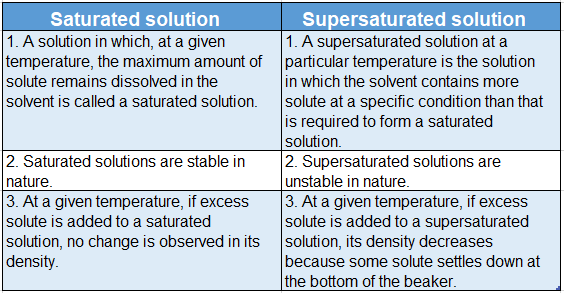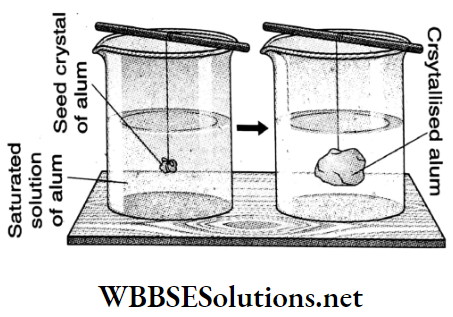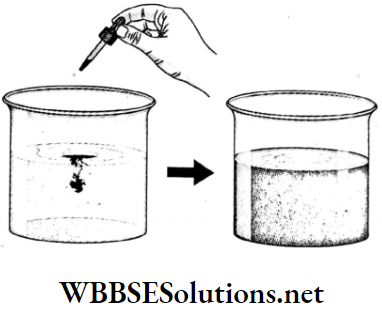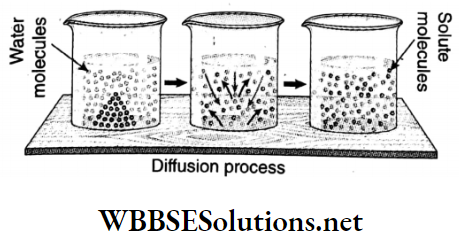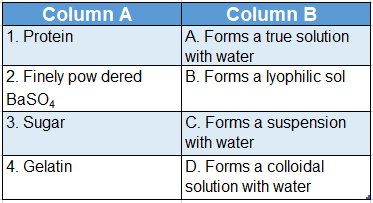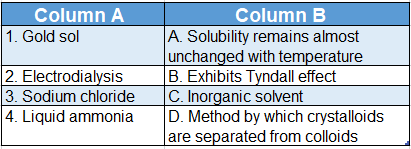Physical World And Measurement
Measurement And Dimension Of Physical Quantity
Scoped And Excitements Of Physics
The conquest of physics is often compared to is climbing up a mountain. We climb up to get a better view and a better realization of the universe around us. The farther we climb, the greater is our view and we acquire a more refined knowledge.
- Sometimes the old path is abandoned, temporarily or permanently, and a new path is invented to climb up to a higher level and to have a better view of the realities of nature.
- A generally accepted viewpoint is that the peak of the mountain is far above the highest point we could reach so far.
- The peak, the ultimate truth regarding nature, is probably far beyond our present-day conceptions.
- As a consequence. the scopes of physics, and of science in general, and the corresponding excitements are almost limitless, paving the way for continuous quests for the truths of the universe.
Read and Learn More: Class 11 Physics Notes
Measurement And Dimension Of Physical Quantity
Nature Of Physical Laws
Physics is concerned with the study of matter and energy in transit. The theoretical structure of physics in the present times is as follows:
Classical Physics: Before the beginning of the 20th century, it was convincingly established that,
- Matter is composed of particles and obeys Newton’s laws of motion, and
- Radiant energy is composed of waves and obeys Max-well’s electromagnetic field theory.
These two constitute what is known today as classical physics. This has been extremely successful to date, except in the domains of
- Particle speed compared to that of light (3 x 10-8 m · s-1) and
- Particle size of the order of 10-10m or less.
Theory Of Relativity: When the particle speed rises to nearly the speed of light, Newton’s laws are no longer obeyed. Einstein’s theory of relativity can successfully explain particle behaviors in that domain. However, this theory is not just a modification of the classical one: it introduces some revolutionary concepts, particularly on space and time.
Quantum Mechanics: Classical physics fails to describe the motion of microscopic particles, of diameter 10-10 m or less. Heisenberg, Schrodinger, de Broglie, Dirac, and others developed quantum mechanics, that can successfully describe this domain. In contradiction to the classical concept, it establishes the dual nature of both matter and radiation: each of them behaves sometimes as the composition of particles, and at other times, of waves.
Quantum Field Theory: This encompasses the theories of relativity and quantum mechanics, and hence, describes the behaviors of high-speed microscopic particles.
Measurement And Dimension Of Physical Quantity
Conservation Principles
A few inherent symmetries of nature led the physicists to accept some conservation principles and to analyze the physical world on the basis of these principles. A physical quantity is said to be conserved when it can change its manifestation only, but can never be created or destroyed. The most important of these principles are:
- Conservation Of Mass-Energy: The symmetry of nature with respect to translation of time is called homogeneity of time and it leads to the law of conservation of energy.
- Earlier, the conservation of mass and the conservation of energy constituted two separate principles. The theory of relativity established that mass and energy are interconvertible, and this concept led to the principle of conservation of mass-energy.
- Conservation Of Linear Momentum: Laws of nature take the same form everywhere in the universe i.e., there is no preferred location in the universe. This symmetry of the laws of nature with respect to displacement or translation in space is called homogeneity of space and gives rise to the law of conservation of linear momentum.
- Conservation Of Angular Momentum: Isotropy of space (i.e., there is no preferred direction in space) gives rise to conservation of angular momentum.
- Conservation Of Charge: Charged particles can be created but only in pairs of equal and opposite charge such that the total amount of charge remains the same.
A few other conservation principles are also in use.
Four Basic Interactions: Only four types of interactions among matter and energy exist in nature and each of them is mediated by the exchange of a particle called mediator or exchange particle.
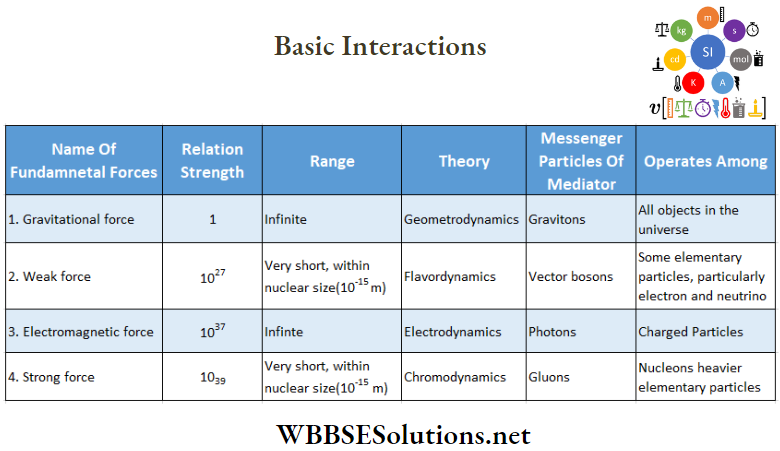
- Gravitational Interaction: This is the attractive interaction between two masses. It obeys the inverse square law. So its range is infinite theoretically, although it may not be detectable beyond a large but finite distance. It is the weakest force in nature.
- Electromagnetic Interaction: This is the attractive or repulsive interaction between two electrostatic charges, or between two magnetic poles. The range is similar to that of gravitational interaction.
- Strong Or Nuclear Interaction: It is the strong attractive force that is responsible for holding neutrons and protons together inside the atomic nucleus. It is a noncentral and nonconservative force. It is a short-range force that operates only over the size of the nucleus (~10-14 m). Beyond this, the interaction goes to zero. It does not obey the inverse square law.
- Weak Interaction: An example of this interaction is that of an electron with a proton or a neutron within nuclear dimensions as in a beta decay. Its range is also very short—it ceases beyond about 10-15 m.
The following table gives a summary of the four fundamental forces in order of increasing strength.
Einstein conceived a dream that all four interactions are different manifestations of a single ultimate natural interaction. This came from his strong belief that nature has some form of ultimate overall symmetry.
The consequent but so far undiscovered concept is known to physicists as the unified field theory. The quest for this theory is on. In spite of some partial successes, the gravitational interaction in particular escaped to show any substantial link with the other three interactions.
Measurement And Dimension Of Physical Quantity
Physics And Technology
Technology is known to be the bridge between the concepts of science and their application to human needs. The rattling of the lid of a kettle containing boiling water led to the concept of the power of steam. Consequently, steam engines were constructed by technologists to utilize steam power directly for human needs. There are many similar examples.
- The theory of the action of magnets on currents led to electric fans and motors, electromagnetic induction has been utilized to construct electricity-producing dynamos in large power plants, the study of radioactivity-produced nuclear bombs and nuclear power plants, and so on.
- In the modern applications of electronics, telecommunications, computers, and the internet, physics, and technology march almost simultaneously.
- In these fields, there are almost no partition lines physicists and technologists almost always complement each other.
Measurement And Dimension Of Physical Quantity
Physics And Society
Physics has always provided very valuable contributions toward the necessities, amenities, and luxuries of our society. Mem in this present society would not certainly have been able to live without the outcomes of physics like electricity, telecommunication, computers, and the internet.
- On the other hand, it must be noted that physics and its practices are nothing but parts of our society. As such, it enjoys the social virtues, and at this same time, cannot escape the social evils.
- It is benefitted from the inherent human nature of pursuing knowledge, in the quest for novel developments.
- On the other hand, it had to be instrumental in the production of nuclear bombs. Proper funding, skilled human resources, and other facilities for physics are often minimal in some countries.
- It is obvious that the development of physics has always been and will always be closely interlinked with the development of our society as a whole.
Measurement And Dimension Of Physical Quantity
Matter And Energy
Air, water, clay, sand, and all such natural substances are made of matter. There are three types of matter
- Element,
- Compound and
- Mixture.
Hydrogen, oxygen, etc. are examples of elements. Whereas water, common salt, etc. are compounds and air, milk, etc. are mixtures. Matter manifests itself in the form of material bodies. A material body, simply called a body, has mass and occupies space.
In nature, every material body is observed to change its state frequently in some form or other. For example, a stone kept under direct sunlight becomes hot, naphthalene balls decrease in size with time, and the water level in a beaker decreases with time. During all such changes matter exchanges energy with its surroundings.
Energy is generally described as the ability to do work. Energy manifests itself in nature in one of the following forms:
- Mechanical energy,
- Heat energy,
- Light energy,
- Sound energy,
- Magnetic energy,
- Electrical energy,
- Chemical energy and
- Nuclear energy.
In classical physics, nature has two entities matter and energy. Both are indestructible. Matter can neither be created nor destroyed, it can only change from one form to another. Similar is the case with energy. These properties led to the formulation of
- The law of conservation of mass and
- The law of conservation of energy. Later, following Einstein’s theory of relativity, it was discovered that mass could be converted into energy (nuclear fission process) or energy into mass (production of electron-positron pair from a moving photon). This led to a single conservation law the law of conservation of mass energy.
Measurement And Dimension Of Physical Quantity
Length Mass And Time Measurement
Measurement Of Length: Length measurement methods are of two types
- Direct method and
- Indirect method.
A physical quantity is measured by comparing it with a standard measurement which defines its unit. For example, when we measure some length, we measure with respect to some standard value like lm or 1cm.
Standard Length: Distance traveled by light in 1/299792458 second in vacuum, is taken as 1 meter.
Direct Method: In this method, the length to be measured is directly compared with the standard unit of length. A scale or ruler can be used to measure the length, breadth, and height of a book. Such scales are already graduated as per the unit of length, and its fractions and multiples. Vernier scale, screw gauge, etc. are also used to measure 2 lengths and other equivalent quantities like diameter, depth, etc.
Indirect Method: Very long lengths like the distance of a star from the earth or very short lengths like the diameter of a molecule, cannot be measured by direct methods. In such cases indirect methods like triangulation method, reflection or echo method, parallax method, etc. are used.
Physical quantities like length, height, distance, radius, and depth have the same dimension and the units for their measurement are also the same, like cm, m, km, in., ft, mi, etc. However, their measured values differ widely in magnitudes. Hence different measuring instruments and techniques are required. The measuring instruments also differ depending on the shape of the body.
Ordinary Scale Or Ruler: It is a thin rectangular metal or wooden strip calibrated in centimeter scale along its length. The smallest scale division is usually 1 mm or 0.1 cm. Its extreme left end is marked 0 cm.

- However, the marking on the extreme right end reads 15 cm, 30 cm, 50 cm, or 100 cm according to the length of the scale. When the marking of scale is from 0 cm to 100 cm it is called a metre-scale.
- Ruler of this type is mainly used for measuring the length of a straight line, a straight rod, stretched wires, etc. The length of a line can be measured by putting the 0 mark on the scale at one end and taking the reading on the ruler at the other end.
Eye Estimation: If the length of a line is 3 cm or 7 cm exactly, the measurement should be written as 3.0 cm or 7.0 cm. It is often seen that although the start of the line coincides with the 0 mark, the end does not coincide with any mark on the scale. It lies between two successive marks.
In a measurement, let the extreme right end lie between 7.6 and 7.7 cm. If the end appears to be exactly in the middle of the two marks the length can be estimated as 7.65 cm although the extreme right digit is not reliable. Based on eye estimation only, the reading should not be written as 7.63 cm, 7.66 cm, etc.
Vernier Scale: In a ruler or a scale the smallest scale division is usually 1 mm or, sometimes, 0.54 mm. Hence such scales cannot be used to measure accurately any length less than the limits stated. In 1631, Pierre Vernier, a French mathematician, invented the ‘vernier scale’ that can increase the accuracy of measurement.
Vernier Scale Description: M, the main scale, is an ordinary scale graduated in cm. Usually, the smallest scale division is 1 mm i. e., 0.1 cm. V is a small scale, called the vernier scale, attached to the main scale and can slide along the edge of it. A typical vernier scale is shown where 10 divisions of this scale equal 9 divisions of the main scale.
Method Of Measurement With A Vernier Scale: The smallest length that a vernier scale can measure is equal to the difference in lengths between the 1 smallest main scale division and the 1 smallest vernier scale division. The value of this difference is called the vernier constant.
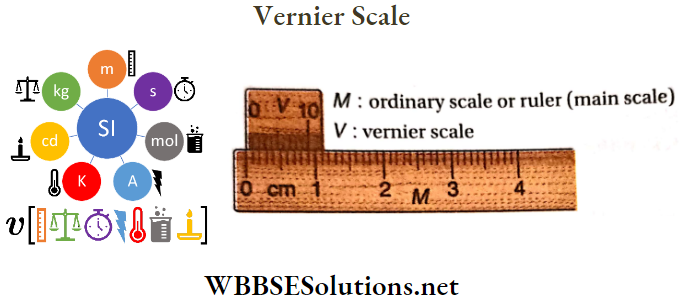
Calculation Of The Vernier Constant:
- The value of l smallest main scale division (say, m unit) is noted.
- The 0 marks on the vernier and the main scale are set to coincide.
Starting from zero, the mark on the main scale that coincides with the last mark on the vernier scale is counted.
Now, let y divisions of the vernier scale coincide with x divisions on the main scale.
Hence, the length of y divisions of the vernier scale = the length of x divisions of the main scale.
∴ Length of 1 division of vernier scale = length of \(\frac{x}{y}\) divisions of main scale = \(\frac{x}{y}\) x m unit
Therefore, vernier constant, c = length of 1 main scale division – length of 1 vernier scale division
∴ c = \(m-\frac{x}{y} \times m=m\left(1-\frac{x}{y}\right)=m\left(\frac{y-x}{y}\right) \text { unit }\)
For most of the vernier scales, (y-x) = 1
Hence, vernier constant c = \(\frac{m}{y}\)
m = 1 mm = 0.1 cm and y = 10, c = \(\frac{0.1}{10}\) cm or 0.01 cm or 0.1 mm.
Hence, the instrument can be measured with an accuracy of 0. 1 mm.
Measurement Using A Vernier Scale: To measure the length of a rod R, the left end of R is set to coincide with the 0 mark of the main scale. Now, the vernier scale is set in such a way that its 0 mark touches the right end of R.
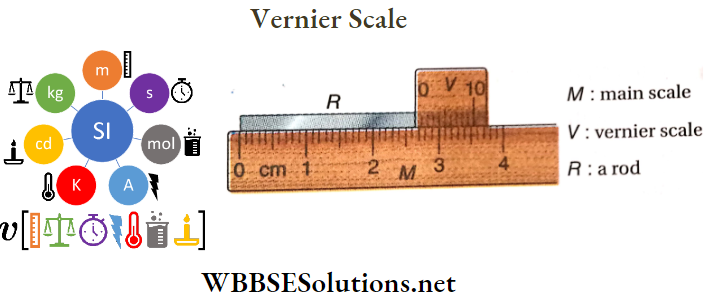
At this stage, the main scale reading that is just on the left of the vernier 0 mark is noted. This reading is denoted as a. a = 2.6. Next, the reading on the vernier that coincides best with any one marking on the main scale is noted.
Let this reading of the vernier be b. b = 5 since the fifth vernier division coincides with a marking of the main scale.
So, the length l of the rod R is given by, l = main scale reading + vernier scale reading x vernier constant
or, l = a+ b x c =(2.6 + 5 x 0.01)cm =2.65 cm.
Measurement And Dimension Of Physical Quantity
Length Mass And Time Measurement Numerical Examples
Example 1. Find the length of the rod.
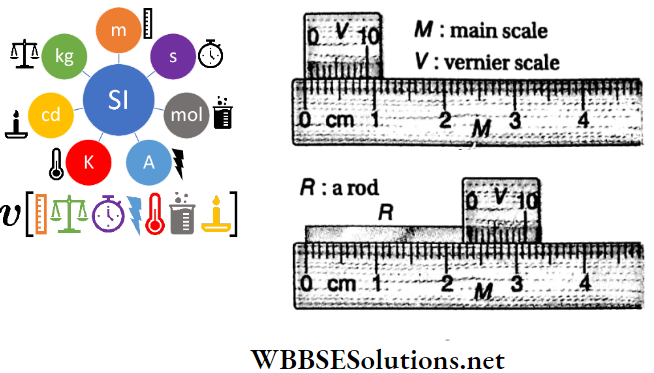
Solution:
The value of 1 smallest main scale division is \(\frac{1}{10}\) = 0.1 cm.
10 vernier divisions coincide with 9 main scale divisions (MSD)
∴ Vernier constant, c = (1 – \(\frac{9}{10}\))x 0.1 cm = 0.01 cm.
0 of the vernier scale crossed 2.2 cm mark on the main scale and 5th vernier division coincides with one main scale division.
∴ The length of the rod = (2.2 + 5 x 0.01) cm = 2.25 cm.
Example 2. Estimate the length of the rod R.
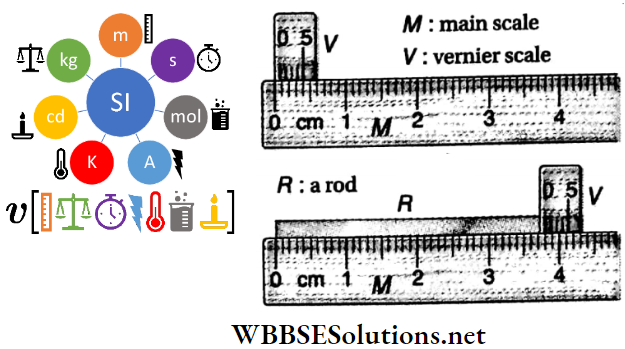
Solution:
The value of 1 smallest main scale division is \(\frac{1}{10}\) = 0.1 cm.
5 vernier divisions coincide with 4 main scale divisions.
∴ Vernier constant, c = (1 –\(\frac{4}{5}\)) x 0.1 = 0.02 cm.
0 of the vernier scale crossed the 3.7 cm mark on the main scale and the 3rd vernier scale mark coincides with an MSD.
∴ Length = (3.7 + 3 x 0.02) = 3.76 cm.
Screw Gauge: A screw gauge can measure lengths smaller than those measured with a vernier. Normally screw gauges can measure lengths up to 0.01 mm, i.e., 10 micrometers (μm), and as such are known as micrometer screw gangs.
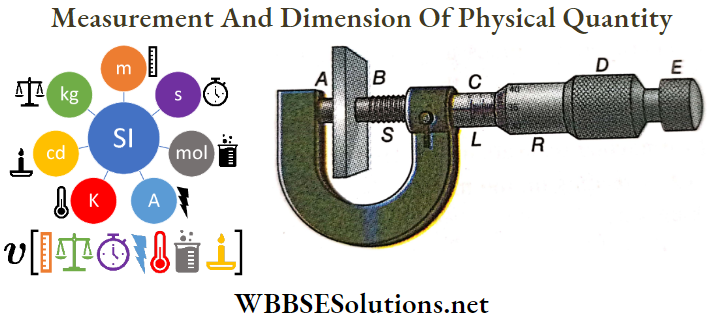
The working principle is—when a screw is turned, it travels uniformly in a direction perpendicular to the plane of rotation. On one complete rotation, the screw travels a distance equal to its pitch, i.e., the distance between two consecutive threads on the screw.
Screw Gauge Description: A screw gauge essentially consists of a thick U-shaped metal frame with a flat end on its left arm A, called a stud. Its right arm ends in a long, hollow, cylindrical nut C whose inner side is threaded.
- A screw S, having one flat end B, can be moved inside the nut C by rotating a hollow cylinder D, called a thimble, attached at the other end of the screw. The main scale (L) usually graduated in mm is marked on a baseline on the surface of C.
- The thimble is also graduated and usually is divided into 100 or 50 divisions. It is called the circular scale (R). A rachet E is attached to the screw, by a spring.
- When the flat end B of the screw is in contact with the stud A, any further movement of the rachet does not press B against A. The rachet, therefore, helps to hold the object to be measured gently, without any deformation, between A and B.
Screw Gauge Description Example: In an experiment if c = 0.001 cm, the main scale reading is 0.7 cm and the circular scale reading is 37, then d = 0.7 cm + 37 x 0.001 cm = 0.737 cm.
Pitch And Loast Count Of A Screw Gauge: The distance advanced by the thimble along the baseline (L) on one complete rotation of the circular scale, is called pitch or screw pitch. To determine the pitch, the 0 mark on the circular scale is aligned with the baseline, and the reading on the main scale is recorded.
- The thimble or circular scale is rotated once to coincide the 0 mark of the circular scale with the baseline again and then the new reading is taken. The difference between the two readings along the main scale is tire pitch.
- Usually, the pitch equals the value of the smallest main scale division, 0.5 mm or 1 mm. The ratio between the pitch and the number of divisions on the circular scale is the least count (c).
Thus, least count, c = \(\frac{\text { pitch }}{\text { no. of divisions on the circular scale }}\)
Least count of a screw gauge is the smallest length that can be measured with it.
For example, if the screw pitch is 0.1 cm, i.e., 1 nr and the circular scale has 100 divisions, then, c = \(\frac{0.1}{100}\) = 0.001 cm
Method Of Measurement: The object whose thickness is to be measured, like a thin wire or a thin metal sheet, is placed between the stud A and the flat end B of the screw such that the two surfaces of the object touch A and B. In this situation both the readings on
- The main scale and
- The circular scale are noted. Then, the thickness of the object (d) = reading on the main scale + reading on the circular scale x c.
Method Of Measurement Example: If c = 0.001 cm (say), the main scale reading is 0.7 cm and the circular scale reading is 37.
∴ d = 0.7 cm + 37 x 0.001 cm = 0.737 cm
Measurement And Dimension Of Physical Quantity
Screw Gauge Numerical Examples
Example 1. Find the screw pitch of a screw gauge having 100 circular scale divisions and a least count of 0.002 cm.
Solution:
A screw gauge having 100 circular scale divisions and a least count of 0.002 cm
Screw pitch
= least count x number of divisions on a circular scale
= 0.002 cm x 100 = 0.2 cm
Example 2. A screw gauge has 50 circular scale divisions and a pitch of 0.1 cm. When this is used to measure the thickness of a plate, the main scale reading is 0.2 cm and the circular scale reading is 35. What is the thickness of the plate?
Solution:
A screw gauge has 50 circular scale divisions and a pitch of 0.1 cm. When this is used to measure the thickness of a plate, the main scale reading is 0.2 cm and the circular scale reading is 35.
Least count (c) for the screw gauge = \(\frac{0.1}{50}\) = 0.002 cm
So the thickness of the plate, t = 0.2 cm + 35 x 0.002 cm = 0.27 cm
Measurement Of Mass: The principle of moments is applied to measure the unknown mass of a body by comparing it with a standard mass using a beam balance or common balance.
Standard Mass: The mass of a platinum-iridium cylinder kept at the International Bureau of Weights and Measures near Paris is taken as the standard mass and is 1 kilogram.
Spring balance and weighing machines can be used to find the weight of a body: the mass can be calculated from these measurements also.
Some indirect methods are employed for the measurement of the mass of practically inaccessible bodies like planets and atomic particles:
- Measurement of the gravitational pull of a planet on a known mass;
- Mass spectroscopy, when an atomic particle is charged.
Measurement Of Time: The concept of time measurement is always based on some periodic event in nature. An event is periodic if it repeats itself over and over again consuming the same amount of time.
Measurement Of Time Example:
- The earth completes a full rotation about its axis in a day. This event repeats itself over and over again and is, thus, periodic. So the time period of the earth’s diurnal motion is a day. This period—a day—can be used as a unit in this measurement of time. For convenience, a day is subdivided to get other units like an hour, a minute, and a second.
- The earth completes a full revolution around the sun in a year. So the time period of the earth’s annual motion is a year. This period—a year—can also be taken as a unit of time. It can be subdivided to get units like a month and a day; or can be multiplied to get longer units like a decade, a century, or a millennium.
The instrument for the measurement of time is a clock. Clocks of different forms are used for time measurements of different types. A clock should always be calibrated initially in any of the time units discussed above.
- However, a day or a year has noticeable uncertainties in its value and cannot provide a reliable and accurate measure of the units used in clocks. For example, a second, defined from a day or from a year, is highly uncertain and not at all reliable.
- At present, universally accepted high-precision time measurement techniques are provided by atomic clocks. This is not actually a clock of practical use; rather the frequencies of electromagnetic radiations emitted by atoms are utilized for a high-precision definition of the standard unit of time—one second.
- The cesium clock is the particular atomic clock used in SI to define a second. Since the cesium-133 atom emits electromagnetic radiation of a precise and constant frequency, it was chosen as the atomic clock standard. This definition is given below:
Definition Of 1 Second: Standard time, 1 second in SI, is defined as 9192631770 periods of radiation from cesium- 133 atoms, at a fixed wavelength. The clock has a least count of about 10-10 s and has a precision of 1 s in 1 x 1018 s.
Clocks In Day-To-Day Use: The cesium clock is the primary clock that defines the unit of time—a second. But actual day-to-day use employs secondary clocks, which are calibrated as per the predefined second, and the time to be measured is directly obtained from the calibrations.
- A pendulum has a definite period of oscillation. This is used in pendulum clocks.
- A periodically vibrating coiled spring is utilised in wind-ing-type wristwatches.
- A quartz crystal oscillator vibrates at a natural frequency of 32768 Hz, i.e., the period of vibration is 1/32768 second. This is the source of modem high-precision quartz clocks.
Measurement And Dimension Of Physical Quantity
Errors In Measurement
Measurement of a physical quantity cannot be free from errors. Errors in measurements are usually of two types
Systematic Error: Generally two types of systematic errors are known:
- Instrumental Error: This arises due to defective instruments.
- Personal Error: This arises from incorrect setting of the instruments, and incorrect recording of data.
- Systematic errors can be minimized or eliminated by properly identifying the sources of errors.
Random Error: This type of error arises randomly due to known and unknown reasons that are entirely beyond our control. Random errors cannot be eliminated totally.
Measurement And Dimension Of Physical Quantity
Calculation Of Errors
Even when a particular physical quantity is measured many times under identical conditions using the same method, the results may not be identical. This dispersion arises due to errors and cannot be eliminated totally.
Actual Or True Value: Let the values of measurement of a physical quantity, measured n times using the same instrument and the same method be x1,x2, x3,….xn. The average of the measurements is then considered to be the actual or true value of the physical quantity.
Hence, actual value, \(\bar{x}=\frac{x_1+x_2+x_3+\cdots+x_n}{n}\)
Error: It is not sufficient to write the actual value x as the absolute value in a measurement. The extent of uncertainty associated with \(\bar {x}\) needs to be mentioned.
Hence, absolute value is x = \(\bar{x} \pm \epsilon\); where ∈, the uncertainty, can be calculated as
∴ \(\epsilon=\frac{\left|x_1-\bar{x}\right|+\left|x_2-\bar{x}\right|+\cdots+\left|x_n-\bar{x}\right|}{n}\)
i. e., ∈ is the average of the differences between the measured value and the actual value, ∈ is also referred to as the mean absolute error. It is to be noted, \(\left|x_1-\bar{x}\right|,\left|x_2-\bar{x}\right|, \cdots\left|x_n-\bar{x}\right| geqslant 0\)
Fractional Error Or Relative Error: it is the ratio of the mean absolute error to the absolute value, i.e., \(\frac{\epsilon}{x}.\).
Percentage Error: It is obtained by multiplying the fractional error by 100. Hence, percentage error = \(\frac{\epsilon}{x} .\) x 100.
Propagation Of Errors: When the value of a physical quantity involves a number of measurements, the resultant error depends on
- The error associated with each individual measurement, and
- Mathematical operations (addition, subtraction, multiplication, division, etc.) are required to arrive at the final value.
Here, we shall discuss the second factor. It is said that the errors in measurement propagate with the said mathematical operations.
Let, Δa, Δb, Δc, …. be the mean absolute errors, respectively, in the measurements of a, b, c, ….. Then in the determination of x, due to mathematical operations among a, b, c, …., Δx = maximum absolute error, f = \(\frac{\Delta x}{x}\) = maximum fractional error and p = \(\frac{\Delta x}{x}\) x 100 = maximum percentage error.
1. Error Due To Addition: If x = a+ b+ c+ …., then, \(\Delta x=\Delta a+\Delta b+\Delta c+\cdots\)
f = \(\frac{\Delta a+\Delta b+\Delta c+\cdots}{a+b+c+\cdots}\)
p = \(\frac{\Delta a+\Delta b+\Delta c+\cdots}{a+b+c+\cdots} \times 100\)
2. Error Due To Subtraction: If x = a = b, then, \(\Delta x=\Delta a+\Delta b ; f=\frac{\Delta x+\Delta b}{|a-b|} ; p=\frac{\Delta x+\Delta b}{|a-b|} \times 100\)
It is to be noted that, if a and b have very close values, then due to the low value of |a – b|, the error due to subtraction tends to become very high.
3. Error Due To Multiplication: If x = ab, then, f = \(\frac{\Delta a}{a}+\frac{\Delta b}{b} ; p=\left(\frac{\Delta a}{a}+\frac{\Delta b}{b}\right) \times 100\)
4. Error Due To Division: If x = \(\frac{a}{b}\), then, \(f=\frac{\Delta a}{a}+\frac{\Delta b}{b} ; p=\left(\frac{\Delta a}{a}+\frac{\Delta b}{b}\right) \times 100\)
5. Error Due To Powers Of a, b, c, …..: If x = \(\frac{a^k c^m}{b^l}=a^k b^{-l} c^m\), then
f = \(k \frac{\Delta a}{a}+l \frac{\Delta b}{b}+m \frac{\Delta c}{c} ;\)
p = \(\left(k \frac{\Delta a}{a}+l \frac{\Delta b}{b}+m \frac{\Delta c}{c}\right) \times 100\)
It is to be noted that the error is high for high values of k, l, m. For example, if m is high but k and l are comparatively low in the expression of x, then a considerable amount of error tends to arise from the measurement of c. So, c should be measured more precisely than a or b.
Measurement And Dimension Of Physical Quantity
Significant Figures
In a measurement, the digits in the measured value is said to be significant figures when all the digits except the last one are reliably accurate.
Significant Figures Example: Suppose you measure the length of a rod with the help of an ordinary scale (in such a scale the distance between two divisions is 0.1 cm). You observe that the length of the rod is more than 20.1 cm but less than 20.2 cm.
- In general, if you look carefully, you will find that the length is either closer to 20.1 cm or 20.2 cm. If it is closer to 20.1 cm, you can write it as 20.1 cm. But you know that the last digit 1 is inaccurate, i.e., uncertain. Thus, the number of significant figures of this measurement is 3.
- A number of significant figures in any reading or measure¬ment indicates how accurate the reading or measurement is. The following points need to be taken into consideration while determining the number of significant figures in a reading or measurement.
- All non-zero digits are significant.
- To count the number of significant figures or digits, we begin from the leftmost non-zero digit and count all the digits up to the rightmost digit; for example, 27.7 has 3 significant figures.
- Zeros between two non-zero digits are significant; for example, 207.007 has 6 significant figures.
- Zeros between the decimal point and the first non-zero digit to its right are not significant; for example, 0.00207 has 3 significant figures.
- Zeros on the right of the decimal point are significant if there is at least one non-zero digit to its left; for example, 277.0 has 4 significant digits.
- Note that the number of significant figures of 277 and 277.0 are 3 and 4 respectively. The former denotes that only the last 7 is uncertain while the latter denotes that only 0 is uncertain.
- Zeros added to the right of a measured value, while changing the unit, are not significant; for example, when 277.0 kg is written as 277000 g, the number of significant digits remains the same, i.e., 4 only. Note that we should write a mass as either 2.770 x 10² kg or 2.770 x 105 g to avoid the error in counting significant figures.
- During the multiplication of two numbers or during the division of one number by another, the number of significant figures of the product or quotient respectively should be equal to that of the number with less significant figures.
- For example, let an object of mass 10 g have a volume of 3 cm3. Hence its density is supposed to be 10 ÷ 3 = 3.33… g · cm-3. But since the number of significant figures of volume is 1, the quotient has to be written as 3 g · cm-3 i.e., with one significant figure.
- Again if the volume of an object is 4.23 cm³ and density is 11 g · cm-3, the mass will be 4.23 x 11 = 46.53 g. But since the number of significant figures of density is 2, the product has to be written as 46 g i.e., with two significant figures only.
- During the addition of two numbers or subtraction of one number from another, the number of digits to the right of the decimal point in the sum or difference should be equal to that of the number with less number of digits to the right of the decimal point. In this case, it is immaterial how many significant figures the two numbers contain.
- For example, if the length of two rods are 5 m and 1.25 m, then the actual sum of the lengths of the rods is 6.25 m. But since for 5 m (number of significant figures = 1), the number of digits to the right of the decimal point is 0, the sum is to be expressed as:
- 5(number of significant figures = 1) + 1.25 (number of significant figures = 3) = 6 (number of significant figures = 1)
A few More Examples For determining the Number Of Significant Figures Are Given Below:
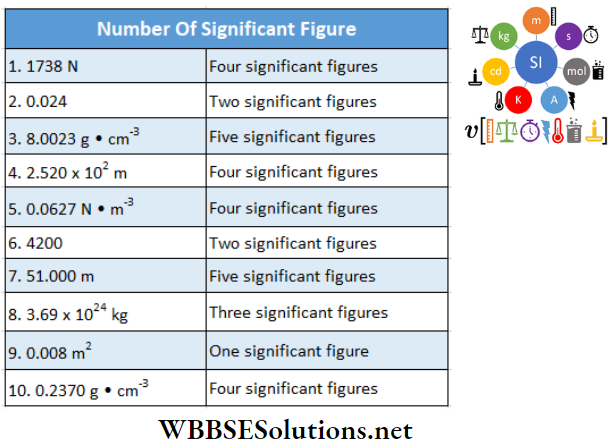
Measurement And Dimension Of Physical Quantity
Rules For Rounding Off Digits
The accuracy of a result obtained by mathematical calculation can never be greater than the accuracy of original physical measurements. Therefore, the non-significant figures should be dropped from the result.
The following rules are adopted while dropping figures in rounding off to the appropriate digit:
- If the digit to be dropped is less than 5 then the preceding digit is kept unchanged. For example, if the number 3.454 is to be rounded off to three significant figures the digit to be dropped is 4 which is less than 5. Hence the preceding digit, namely 5, is not changed. Therefore, it should be written as 3.45.
- If the digit to be dropped is more than 5, then the preceding digit is increased by 1. For example, 3.458 is rounded off as 3.46 to three significant figures.
- If the digit to be dropped happens to be 5 or 5 followed by zero(s), then the preceding digit to be retained is increased by 1 if it is odd; if it is even then it remains unchanged.
- For example, 3.475 3.4750 or 3.47500, when rounded off to the second decimal place, will be written as 3.48. For numbers like 3.48, 3.4850, or 3.48500, all will be rounded off to the same decimal place and will be written as simply 3.48.
- If the digit to be dropped happens to be 5 followed by some non-zero digit at any place then the preceding digit up to which the rounding off is desired will be increased by 1 (no matter if it is odd or even).
- For example. if 3.485010 or 3.485125 when rounded off up to the second decimal place will be written as 3.49. Similarly, 3.475010 when rounded off up to the second decimal place will be written as 3.48.
Measurement And Dimension Of Physical Quantity
Rules For Rounding Off Digits Numerical Examples
Example 1. In an experiment of a simple pendulum a student i made several observations for the period of oscillation. His readings turned out to be 2.63s, 2.56s, 2.42s, 2.71s and 2.80 s. Find
- Meantime period of oscillations or the most accurate value of time period,
- Absolute errors in each reading,
- Mean absolute error,
- Fractional error and
- Percentage error.
Solution:
1. The mean time period of oscillation,
T = \(\frac{2.63+2.56+2.42+2.71+2.80}{5} \mathrm{~s}\)
= \(\frac{13.12}{5} \mathrm{~s}=2.624 \mathrm{~s} \approx 2.62 \mathrm{~s}\)
(rounded off to 2nd decimal place)
2. Taking 2.62 s as the true value, the absolute errors (true value – measured value) in the five readings are:
(2.62 – 2.63) s = -0.01 s ; (2.62 – 2.56) s = 0.06 s ;
(2.62 – 2.42) s = 0.20 s; (2.62 – 2.71) s = -0.09 s and
(2.62-2.80) s = -0.18 s
3. The (maximum) mean absolute error is, \((\delta T)_{\max } =\frac{(0.01+0.06+0.20+0.09+0.18)}{5} \mathrm{~s}\)
= \(\frac{0.54}{5} \mathrm{~s}=0.108 \mathrm{~s} \approx 0.11 \mathrm{~s}\)
4. The (maximum) fractional error is, \(\left(\frac{\delta T}{T}\right)_{\max }=\frac{0.11 \mathrm{~s}}{2.62 \mathrm{~s}} \approx 0.04p\)
5. The maximum percentage error is, \(\left(\frac{\delta T}{T}\right)_{\max } \times 100=0.04 \times 100=4 \%\)
∴ The value of T should be written as (2.62 ± 0.11) s
Example 2. The measured length and breadth of a rectangle are written as (5.7 ± 0.1) cm and (3.4 ± 0.2) cm respectively. Calculate the area of the rectangle with error limits.
Solution:
The measured length and breadth of a rectangle are written as (5.7 ± 0.1) cm and (3.4 ± 0.2) cm respectively.
Given l = 5.7 cm and Δl = 0.1 cm; b = 3.4 cm and Δb = 0.2 cm.
The area of the rectangle without error limit is,
A = l x b =(5.7 x 3.4) cm² = 19.38 cm² ≈ 19.4 cm²
Next, the fractional error in A is, \(\frac{\Delta A}{A}=\frac{\Delta l}{l}+\frac{\Delta b}{b}=\frac{0.1}{5.7}+\frac{0.2}{3.4} \approx(0.02+0.06)=0.08\)
∴ \(\Delta A=0.08 \times A \approx 0.08 \times 19.4 \mathrm{~cm}^2 \approx 1.6 \mathrm{~cm}^2\)
Hence, the area of the rectangle with an error limit is (19.4± 1.6) cm².
Example 3. The potential difference across the ends of a wire has been measured to be (100 ± 5) volt and the current in the wire as (10 ± 0.2) ampere. What is the percentage error in the computed resistance of the wire?
Solution:
The potential difference across the ends of a wire has been measured to be (100 ± 5) volt and the current in the wire as (10 ± 0.2) ampere.
Given, V = (100 ±5) volt and I =(10±0.2) ampere
Now, R = \(\frac{R}{I}\)
The maximum percentage error in R is, \(\left(\frac{\Delta R}{R}\right)_{\max } \times 100=\left(\frac{\Delta V}{V} \times 100\right)+\left(\frac{\Delta I}{I} \times 100\right)\)
= \(\left(\frac{5}{100} \times 100\right)+\left(\frac{0.2}{10} \times 100\right)\)
= 5% + 2% = 7%
Example 4. A student performing Searle’s experiment for finding the Young’s modulus Y of the material of a wire takes the following observations: Length of the wire (L) = 2.890 m, diameter of the wire (D) = 0.082 cm, mass suspended from the wire (M) = 3.00 kg, extension in the length of wire (l) = 0.087 cm. Calculate the maximum permissible error in the value of Y.
Solution:
A student performing Searle’s experiment for finding the Young’s modulus Y of the material of a wire takes the following observations: Length of the wire (L) = 2.890 m, diameter of the wire (D) = 0.082 cm, mass suspended from the wire (M) = 3.00 kg, extension in the length of wire (l) = 0.087 cm.
The Young’s modulus of the material is given by, Y = \(\frac{4 M g L}{\pi D^2 l}\)
Here M = 3.00 kg ∴ ΔM = 0.01 kg
L = 2.890 m ∴ ΔL = 0.001 m
D = 0.082 cm ∴ ΔD = 0.001 cm
l = 0.087 cm ∴ Δl = 0.001 cm
The maximum permissible percentage error in Y is, \(\left(\frac{\Delta Y}{Y}\right)_{\max } \times 100= \left(\frac{\Delta M}{M} \times 100\right)+\left(\frac{\Delta L}{L} \times 100\right)\)
+ \(2\left(\frac{\Delta D}{D} \times 100\right)+\left(\frac{\Delta l}{l} \times 100\right)\)
= \(\frac{0.01}{3.00} \times 100+\left(\frac{0.001}{2.890} \times 100\right)\)
+ \(2 \times\left(\frac{0.001}{0.082} \times 100\right)+\left(\frac{0.001}{0.087} \times 100\right)\)
= \(0.33 \%+0.035 \%+2.44 \%+1.15 \%\)
= 4%
Measurement And Dimension Of Physical Quantity
Accuracy And Precision Of Measuring Instruments
Accuracy: The accuracy of a measuring instrument is decided by the closeness of the measured value of any physical quantity to the actual value which is known beforehand. Suppose the mass of a 100 g body, when measured using a common balance, reads 95 g. The measurement is, therefore, not accurate.
Precision: An instrument is precise when it repeats almost the same value when a physical quantity is measured a number of times. Precision, therefore, denotes how close the measured values of a physical quantity are with respect to one another. Suppose the mass of a 100 g body, when measured five times using a common balance, reads 90g, 96g, 92g, 93g, 97g. The measurement is, therefore, not precise.
Comparison Between Accuracy And Precision:
- By using an instrument only once, we can determine its accuracy. But to know its precision we need to take a number of measurements.
- Accuracy denotes how close the measured value is, relative to the actual value. Precision denotes how close the measured values are, relative to one another.
- The accuracy of an instrument depends upon the method of measurement but precision depends on random factors.
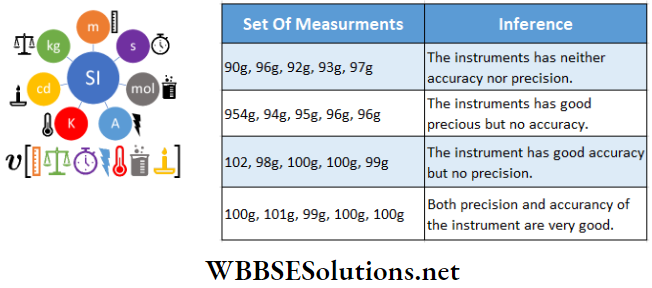
Comparison Between Accuracy And Precision Example: Let us consider the examples in the following table, taking 100 g as standard:
The difference between accuracy and precision can be explained pictorially in the following simple example: Suppose, B is a target board and T is the target point marked on it. A shooter hits the target using two different rifles. The dots on the figure are the bullet marks. Now an observation of the target boards clearly shows that:
- The 1st rifle is more accurate since the bullet marks are all around the target point. However, the precision is low as the points are scattered over a large area. This means that the quality of the rifle is fairly low.
- The 2nd rifle is highly inaccurate since the bullet marks are far from the target point. But the precision is very high because the marks are very close to one another.
- This indicates that it is a good-quality rifle, but its initial settings are somehow defective.
- With proper adjustments, all the bullet marks can be brought close to the target point. In that case, the accuracy and precision would both be high.
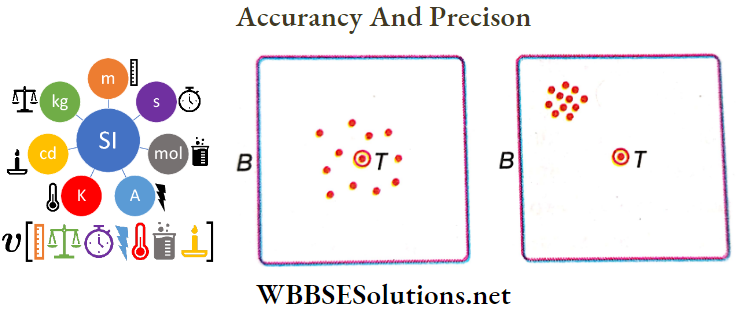
Measurement And Dimension Of Physical Quantity Synopsis
The unit of a physical quantity can be obtained from the base units raised to certain numeric indices. The indices denote the dimensions of the physical quantity.
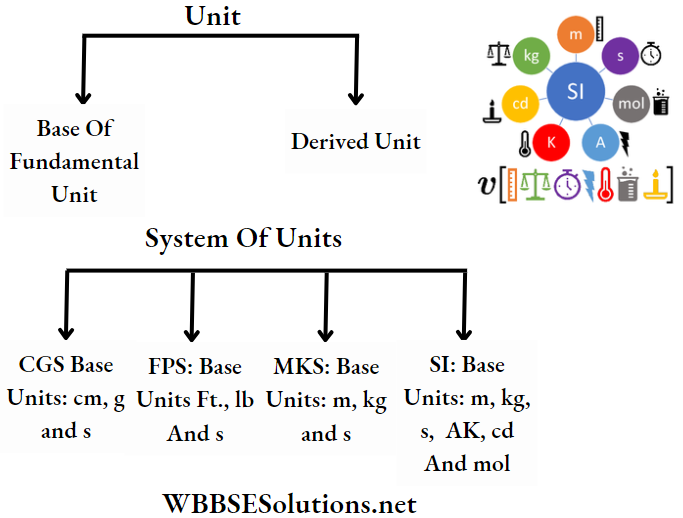
- When the dimension of a quantity is 1, the quantity is called a dimensionless physical quantity.
- A dimensionless physical quantity can also have a unit, example, angle, or specific gravity.
- The minimum length that can be measured by using a vernier scale or a screw gauge is the vernier constant or the least count respectively.
- In a measurement, the digits in the measured value is said to be significant when, except the last digit, all other digits are correct.
Measurement And Dimension Of Physical Quantity Useful Relations For Solving Numerical Examples
Principle Of Dimensional Homogeneity: In any mathematical expression or equation involving physical quantities, each term must have the same dimension.
- Vernier constant of a vernier scale = c
- Length of the smallest division in the main scale = m Reading on the main scale = a
- Length of y divisions in vernier scale = length of x divisions in a main scale.
- Length of a rod measured by that vernier scale = l
Reading in vernier scale = b
- c = \(\frac{y-x}{y} \times m\)
- l = a + bc
- Least count of a screw gauge = c
- Total number of divisions on a circular scale = y
- Reading on the linear scale = a
- Pitch of the screw = x
- Thickness of a lamina as measured by that screw gauge = d
Reading on the circular scale = b.
- c = \(\frac{x}{y}\)
- d = a+ bc
- If n numbers of measured values of a physical quantity, are x1, x2, x3,….,xn then the average value or true value of the quantity, \(\bar{x}=\frac{x_1+x_2+x_3+\cdots+x_n}{n}\)
- If the error in the average value of a physical quantity is ∈, then the absolute value of the quantity, x = \(\bar{x}\) ± ∈
- where \(\epsilon=\frac{\left|x_1-\bar{x}\right|+\left|x_2-\bar{x}\right|+\left|x_3-\bar{x}\right|+\cdots+\left|x_n-\bar{x}\right|}{n}\)
- Fractional error or relative error = \(\frac{\epsilon}{x}\)
- Percentage error = \(\frac{\epsilon}{x}\) x 100.
Measurement And Dimension Of Physical Quantity Very Short Answer Type Questions
Question 1. Write the number of base units in SI.
Answer: Seven
Question 2. Is mole a base unit or a derived unit in SI?
Answer: Base
Question 3. What is the unit of thermal capacity in SI?
Answer: J K-1
Question 4. Express one parsec in terms of light year.
Answer: 1 parsec = 3.26 light year
Question 5. Light year is a _____ unit.
Answer: Fundamental
Question 6. Ampere is a _____ unit in SI.
Answer: Base
Question 7. Candela is a ______ unit in SI.
Answer: Base
Question 8. Parsec is a ____ unit.
Answer: Fundamental
Question 9. What is the dimension of a dimensionless physical quantity?
Answer: 1
Question 10. The relative density of lead is 11.3. What is its density in CGS and SI?
Answer: 11.3 g · cm-3 , 1.13 x 104 kg · m-3
Question 11.
- kg · m2 · s-2 = _______ g · cm2 · s-2
Answer: 107 - 1 m = _______ light year.
Answer: 10-16 - 3.0 m · s-2 = ______ km · h-2.
Answer: 3.9 x 104 - G = 6.67 x 10-11 N • m2 • kg-2 = ______ cm3 • s-2 • g-1.
Answer: 16.67 x 10-8
Question 12. If x = a+ bt+ ct², where x is in meters and t in seconds, what are the dimensions of b and c?
Answer: LT-1 and LT-2
Question 13. The equation of state of a real gas is (p+\(\frac{a}{V^2}\))(V-b) = RT, where p, V, and T are pressure, volume, and absolute temperature, respectively. Find out the dimension of b.
Answer: L3
Question 14. The Avogadro number is 6.022 x 1023. How many significant figures are there?
Answer: 4 figures: 6, 0, 2, 2
Measurement And Dimension Of Physical Quantity Assertion Reason Type Questions And Answers
These questions have statement 1 and statement 2. Of the four choices given below, choose the one that best describes the two statements.
- Statement 1 is true, statement 2 is true; statement 2 is a correct explanation for statement 1.
- Statement 1 is true, and statement 2 is true; statement 2 is not a correct explanation for statement 1.
- Statement 1 is true, statement 2 is false.
- Statement 1 is false, and statement 2 is true.
Question 1.
Statement 1: It is obvious that the dimensions of all the terms must be the same in any mathematical relation between physical quantities.
Statement 2: Dimensions of a physical quantity are the powers to which the fundamental units should be raised to represent the unit of that physical quantity.
Question 2.
Statement 1: The quantity \(\frac{1}{\sqrt{\mu_0 \epsilon_0}}\) is dimensionally equal to velocity and also numerically equal to the velocity of light.
Statement 2: μ0 is the permeability and ∈0 is the permittivity of free space.
Question 3.
Statement 1: If y = ax b and Y = \(\frac{a}{b}\), then the fractional error of both y and Y is ±\(\left(\frac{\Delta a}{a}+\frac{\Delta b}{b}\right)\)
Statement 2: When two quantities are multiplied or divided their maximum relative errors are added up.
Question 4.
Statement 1: Pressure has the dimensions of energy density.
Statement 2: Energy density = y = \(\frac{\text { energy }}{\text { volume }}=\frac{M L^2 T^{-2}}{L^3}\) = \(M L^1 T^{-2}\)
Question 5.
Statement 1: UR and CR both have the same dimensions.
Statement 2: UR and CR both have the dimension of time.
Question 6.
Statement 1: The measurements of mass and length of a side of a cube involve, errors of 3% and 2%, respectively. The error in the density of its material, computed from this data, would be 9%.
Statement 2: If u = \(\frac{x^a y^b}{z^c}\), the fractional error in the computation of u is, \(\frac{\Delta u}{u}=a \frac{\Delta x}{x}+b \frac{\Delta y}{y}+c \frac{\Delta z}{z}\).
Question 7.
Statement 1: On a body of mass m, moving with a speed v in a circular path of radius r, the centripetal force is, F = \(\frac{m v^2}{r g}\).
Statement 2: In a mathematical expression involving physical quantities, each term on both sides of the equation must have the same dimension.
Measurement And Dimension Of Physical Quantity Match Column 1 And Column 2
Question 1. R = resistance, L = inductance, and C = capacitance. Match the quantities with their dimensions.
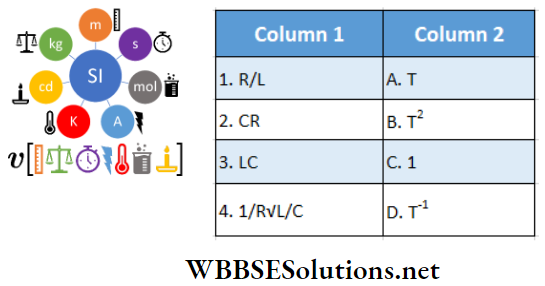
Answer: 1. D, 2. A, 3. B, 4. C
Question 2.
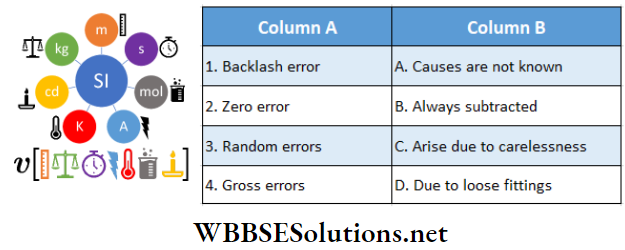
Answer: 1. D, 2. B, 3. A, 4. C
Question 3. The significant figures are given in column 2.
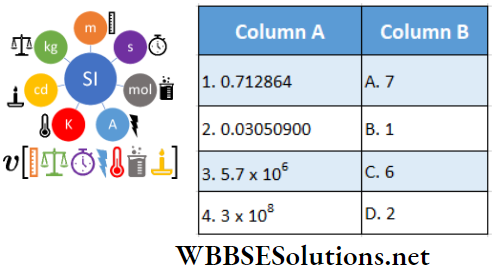
Answer: 1. C, 2. A, 3. D, 4. B
Question 4. Identify parts of the same dimensions
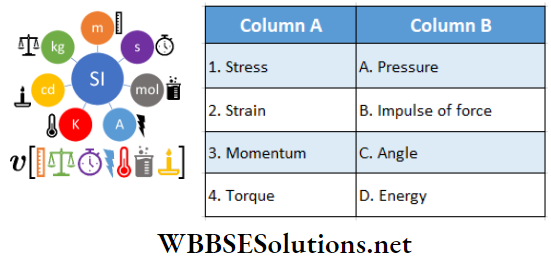
Answer: 1. A, 2. C, 3. B, 4. D
Question 5. Match the quantities with their dimensions
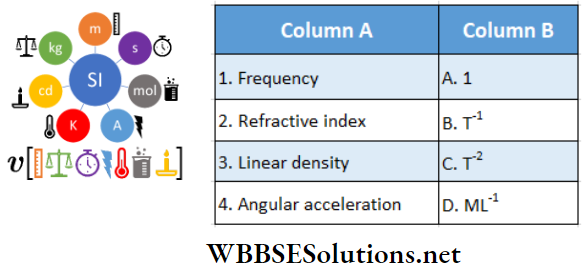
Answer: 1. B, 2. A, 3. D, 4. C
Measurement And Dimension Of Physical Quantity Comprehension Type Questions And Answers
Read the following passage carefully and answer the questions at the end of it.
Question 1. For real gases, van der Waals equation of state can be expressed as \(\left(p+\frac{a}{V^2}\right)(V-b)=R T\)= RT where p is the pressure, V is the molar volume and T is the absolute temperature of the given sample of gas and a, b and R are constants.
1. Dimension of a is
- ML5T-2
- L-1T-2
- L3
- L6
Answer: 1. ML5T-2
2. Dimension of b is
- ML5T-2
- ML-1T-2
- L3
- L6
Answer: 3. L6
3. Which of the following does not have the same dimension as that of RT?
- pV
- pb
- \(\frac{a}{V^2}\)
- \(\frac{a b}{V^2}\)
Answer: 3. \(\frac{a}{V^2}\)
4. Dimension of \(\frac{a b}{R T}\) is
- ML5T-2
- M0L0T0
- ML-1T-2
- None of these
Answer: 4. None of these
5. The dimension of RT is the same as that of
- Energy
- Force
- Specific heat
- Latent heat
Answer: 1. Energy
Question 2. It two physical quantities a and b are related by the equation a = kb, where it is a dimensionless constant, then the principle of dimensional homogeneity demands that a and b have the same dimension. However, the proportionality constant k cannot be determined by dimensional analysis only. It may, at most, be written that a ∝ b, if a and b are of the same dimension.
1. Time period (T) of oscillation of a liquid drop depends on its radius r, the density ρ, and the surface tension σ of the liquid. Then T is proportional to
- \(\sqrt{\frac{\rho r^2}{\sigma}}\)
- \(\sqrt{\frac{r^2}{\rho \sigma}}\)
- \(\sqrt{\frac{r^3 \rho}{\sigma}}\)
- \(\sqrt{\frac{\rho \sigma}{r^3}}\)
Answer: 3. \(\sqrt{\frac{r^3 \rho}{\sigma}}\)
2. If a particle of mass m executes simple harmonic motion with amplitude A and frequency f, then its energy is proportional to
- \(\frac{m f}{A^2}\)
- \(m f A^{-2}\)
- \(m f^2 A^{-2}\)
- \(m f^2 A^2\)
Answer: 4. \(m f^2 A^2\)
3. A coil of inductance L stores an amount of energy 1/2 LI² when a current I passes through it. The dimension of L is
- ML2T-1l2
- ML2T-1l-2
- ML2T-2l2
- ML2T-2l-2
Answer: 4. ML2T-2l-2
Measurement And Dimension Of Physical Quantity Integer Type Questions And Answers
The answer to each of the questions is a single-digit integer between 0 and 9.
Question 1. The values of the two resistors are (5.0± 0.2)kΩ and (10.0± 0.1)kΩ. What is the percentage error in the equivalent resistance when they are connected in parallel?
Answer: 7
Question 2. In a circuit, the generation of heat depends on resistance, current, and time for which the current flows. If the error in measuring resistance, current, and time are 1%, 2%, and 1% respectively, find the maximum percentage error in measuring the heat.
Answer: 6
Question 3. The period of oscillation of a simple pendulum is T = \(2 \pi \sqrt{\frac{l}{g}}\). Length l is about 10 cm and is known to 1 mm accuracy. The period of oscillation is about 0.5 s. The time of 100 oscillations is measured with a wristwatch that shows the minimum interval of time as Is (i.e. least count = 1s). What is the percentage of accu¬racy in the determination of g?
Answer: 5

